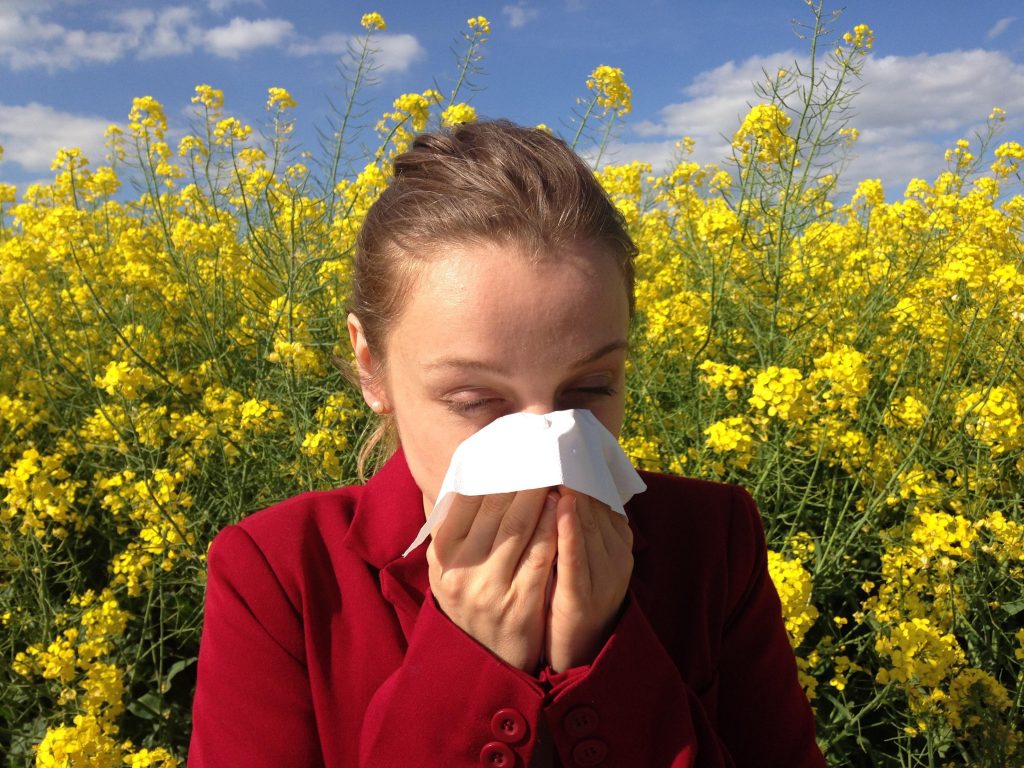
From May 1st thru May 31st, there will be an entire month dedicated to National Asthma and Allergy Awareness. Almost everyone knows someone personally who has been affected by at least one of these issues and is probably still battling the effects of it. With the advent of springtime, all the little irritants that get spread around by the wind will begin bothering allergy-sufferers, and those who have asthma are likely to be reaching for their inhalers more often. In Oxford and elsewhere around the country, let’s demonstrate our awareness of what people must endure when the spring season arrives each year. Senior home care professionals have learned some methods and strategies for dealing with asthma and allergies, and you could help provide some of that same relief to your senior loved ones by following some of the tips below.
Hand-in-hand
You may not have realized this before, but asthma and allergies are actually closely related, and that’s why you’ll often find one in the same place that you find the other. The very same triggers that produce symptoms of hay fever, i.e. dust mites, pollen, and pet dander, will also cause the onset of an asthma episode. Whenever your immune system thinks that it has identified an invader, for instance, some pollen, it attacks and attempts to eliminate the invader. Whatever the allergen might be, your body’s antibodies will bind to it in an effort to neutralize it.
This is what produces all the traditional symptoms of hay fever, e.g. runny nose, red eyes, scratchiness, etc. When these symptoms spill over into the lungs and airways, they produce asthma symptoms and may require immediate treatment. For the most part, these two maladies are treated separately, although there are some medications that tackle both at the same time. For instance, you can treat both conditions with Leukotriene modifiers, you can use anti-immunoglobulin therapy, or you can take allergy shots.
Treating your asthma or allergies will depend on exactly how severe your symptoms are, and how much irritation you can tolerate. However, it’s always best to gain an understanding of what your personal triggers are, so you can avoid these and prevent the onset of another episode. In fact, this is one of the best approaches to handling your asthma or allergies. You may need to work with your family doctor to learn exactly which triggers are the most potent in your own case, and then avoid exposure to those triggers whatever they may be.
Reducing effects of asthma and allergies
As mentioned above, one of the best things you can do for yourself to mitigate the effects of these two medical conditions is to learn what triggers them both in your case, and then avoid those triggers. For some people, a powerful trigger is tobacco smoke or smoke from a fireplace, so if these are your triggers, simply avoid them as much as possible and you’ll probably stay symptom-free for much longer. Some chemicals will also do the trick, so if you’re in this category, find out which chemicals bother you and steer clear of them.
When building or undergoing home renovation projects, you should be aware that such situations are natural for producing more airborne contaminants such as wood chips, chemicals, and moisture which promote mold and mildew. Care should be taken to use asthma and allergy-friendly products and to make sure afflicted people avoid the construction areas as much as possible. Be wary of using wall-to-wall carpeting, since this can be a haven for bugs, mites, and all kinds of other unwanted household guests.
Make sure your home has good ventilation, so water isn’t allowed to accumulate in places and form molds or mildew. If you have humidity control in your home, try to keep it no higher than 50%, since that would be the most comfortable level for people bothered by asthma or allergies. Keep alert to signs of water accumulation, and make sure that all chemicals are safely stored in an attic, basement, or outside storage area, well away from household members who have respiratory issues.
Even your landscaping has to be considered, especially since many of the airborne allergens encountered by household members come directly from plants in the yard. Many kinds of grasses and trees are highly allergenic, so you should do some research to find out which ones will be most compatible with the kinds of medical conditions your family members have. To discourage pollen from invading your home, you can plant female plants, which are non-pollinating. You can also avoid planting trees like maple, birch, and oak for the same reason.
A little research and planning of household surroundings and furnishings can go a long way toward making your family members more comfortable, and of enjoying more consistently good health.
